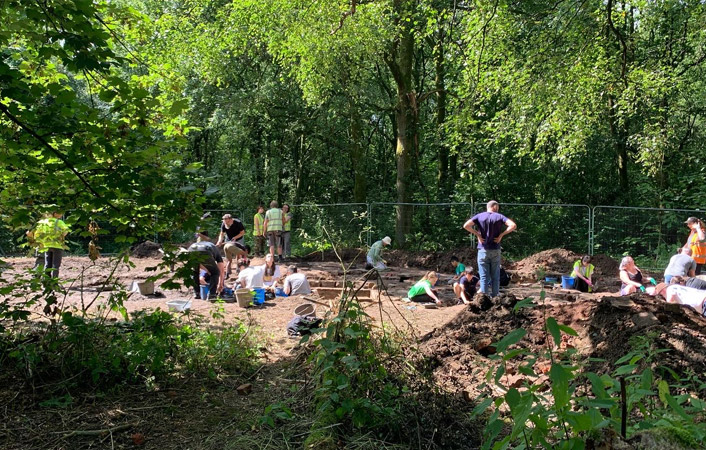A 700 YEAR OLD family ESTATE AND DYNASTY
Hulton Park sits at the heart of a family estate and dynasty stretching over 700 years.
One of the main sources of the Hulton family’s wealth came from the rich coal seams under their estate. Mining first started in the 1550s, and there is evidence of mining in the area since the 16th century.
By the 1800s the amount of coal being extracted from the estate required the new technology of the railway to transport it from the collieries. This led to the visit at Hulton Hall of the railway pioneer George Stephenson who in August 1828 completed the first section of a railway line that connected Bolton to the collieries. This was two years before Stephenson had completed his link between Manchester and Liverpool.
The estate was the site of a great tragedy when on 21 December 1910 an underground explosion at the Pretoria Pit claimed the lives of 344 men and boys. Memorials on the edge of Park and in Westhoughton mark their lives.
There have been a number of Halls built on the site and the earliest known dating from the 14th century. In the early 19th century, a landscape designed by John Webb was created along with a much grander Hulton Hall. The landscape included new plantations, pasture, pleasure gardens and lakes.
By the 1950s the Hall had fallen into disrepair and had been damaged by vandalism. It was demolished in 1958. The gardens and wider Park also became neglected and the family dynasty came to an end with the death of Sir Geoffrey Hulton, who had no heir, in 1993.
Peel L&P acquired the Hulton Estate in 2010 and has been seeking to arrest the decline of the estate and bring forward a sustainable long term plan. Ensuring the restoration of Hulton Park to its past glory and providing it with a lasting future has always been the primary aim for Peel. We want our proposals to celebrate the heritage of the site and the scheme has been specifically designed to conserve and enhance the value of the Park as a whole. We recognise that Hulton Park needs to be treated with care to safeguard its heritage value and national importance.
The majority of the Hulton Park application is a Grade II Registered Park and Garden of Special Historic Interest; however, the Park has experience decades of significant decline with a lack of investment and management contributing to the gradual degradation of the designed landscape and key parkland features.
This includes:
- The demolition of Hulton Hall in the 1950s
- Woodland plantations and the pleasure grounds have become severely overgrown, unmanaged and invaded by non-native species
- Important historic structures such as the walled kitchen garden and Grade II Listed Dovecote are derelict or in a state of disrepair
- Lakes and ponds have silted up and lost their original form
An important element of the proposal is to restore Hulton Park and these lost historical features, with substantial investment to reverse its long-term decline and implement an ongoing conservative management regime.
Community Dig
Over the summer period, we were able to hold a community archaeological dig at Hulton Park in partnership with the University of Salford; in which members of Bolton’s community and beyond were being invited to Hulton Park to dig into a fascinating part of local history.
600 people registered in 48 hours to take part in the first community dig, which saw the Salford Archaeology team and volunteers excavate the site and have uncover large, visible areas of the old hall’s foundations.
Hulton Park and the Hulton family had a wide spectrum of historical and cultural connections, including being the home of William Hulton. The archaeological excavation was a rare opportunity to see first-hand an important part of this historic estate.
Peel L&P’s long-term vision for the Hulton Park Estate includes restoring the landscape back to its former glory, including the pleasure grounds, historic walled kitchen garden and serpentine lake and creating new walking and cycling routes through the Park for the public to enjoy.

